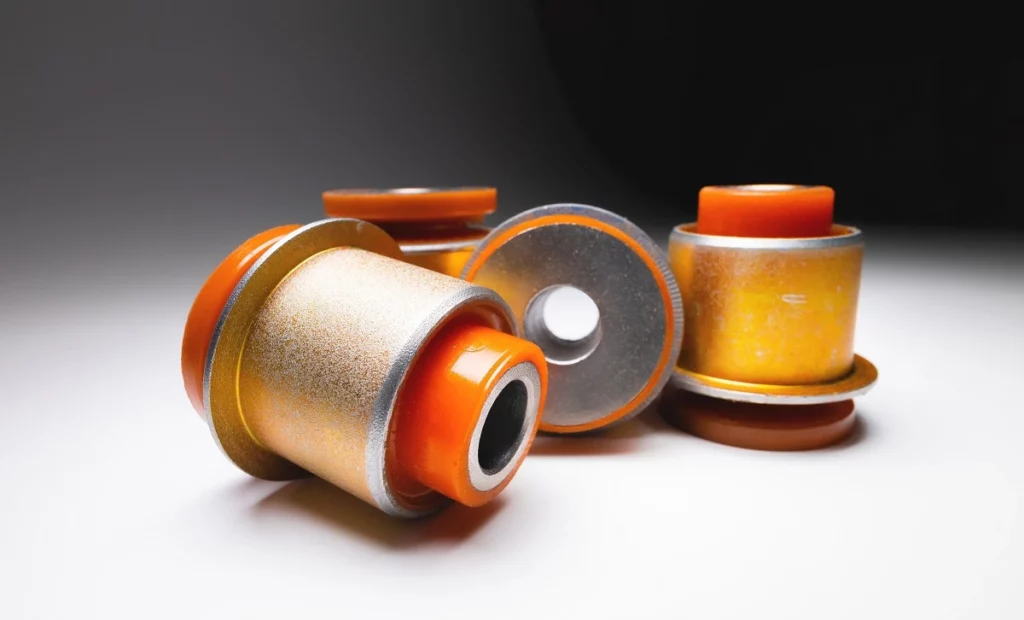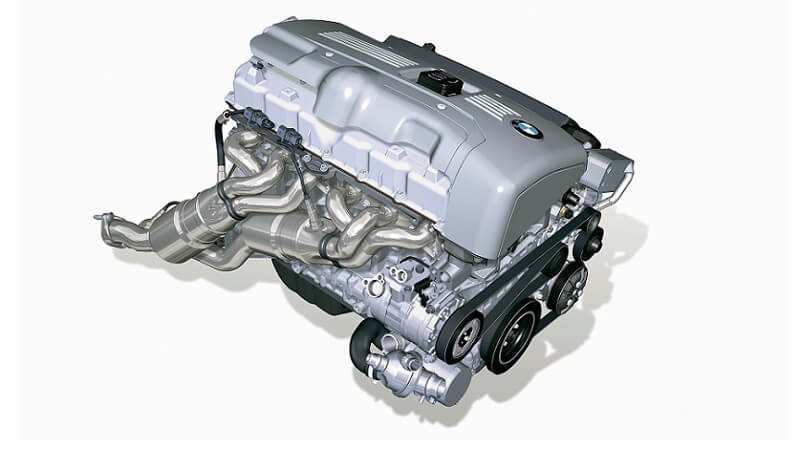Most BMWs out there provide an authentic driving experience. These are driver-oriented cars built to deliver a thrilling drive in varying degrees. However, there are always ways to make these cars handle better and feel more responsive.
One of the popular mods that are often done in pursuit of better handling is polyurethane bushings. They do help, and tangibly so. However, the question is — are they the right solution for you? Here are the pros and cons of polyurethane bushings.

Understanding NVH and Stock Bushings
When BMW, or most other carmakers for that matter, designs cars, they are looking to address the needs of the average driver from their target demographics. This is usually a person who wants a mix of benefits such as performance, reliability, but also comfort. At the end of the day, your average Joe wants a relaxing commute to and from work with occasional adrenaline rush of wide open throttle. One of the main factors that affect ride comfort is NVH — Noise, Vibration, and Harshness. In other words, how loud the car is, how much vibration reaches you from the engine and suspension, and how well it soaks up gear changes and other “unpleasant” sideffects of driving.
Carmakers deal with NVH through sound insulation and many other means. However, one of the main ways to reduce vibration is to introduce a damping element between the origin of the vibration and the passenger cabin.
Rubber just so happens to work great as a damping media. If you put a piece of rubber between two metal parts, it will soak up most if not all vibrations coming from one side or the other. That’s why all cars come with stock rubber bushings all around.
However, while this particular property of rubber bushings is great for comfort, it’s not that great if you want more responsive handling. Enter polyurethane bushings.
What Are Polyurethane Bushings?
Polyurethane is a solid material that is designed to take a fair bit of abuse. Different types of polyurethane have different properties, but most of those used in automotive applications can brush off the forces exerted on them by the suspension components.
The idea behind using polyurethane in bushings is simple — replace rubber with a stiffer material and enjoy the perks of having a more direct link between different parts of your car’s suspension.
The use of polyurethane is sort of a middle-ground solution that gives you 80% of the performance you’d get from a solid metal-on-metal bushing, with the added benefit of actually killing off some of the vibrations. Accent on some.
Why Get Poly Bushings?
The answer to this question is fairly obvious. Poly bushings stiffen up the suspension and eliminate any slack that was there from the factory. The car will feel more responsive under cornering, but also braking. You can get a full set of poly bushings and practically forget about dealing with this type of component. They will outlast any rubber bushing out there.
Of course, poly bushings work best in combination with other suspension upgrades. Running full coilovers in addition to a new set of stiff bushings will transform the way your BMW drives. However, there are tradeoffs. Few of them, actually.
The Cons of Poly Bushings

The main downside to infusing your BMW’s suspension with polyurethane is the fact that you can’t turn off the stiff ride. Many people find the new levels of vibrations to be exhausting after a while. You’ll feel a lot more of what’s going on under the car, which can be tiring in the long run. That said, there are different polyurethane formulas out there. Some manufacturers offer a gradient of stiffness, which helps if you’re looking for a more custom-tailored solution.
The other main con to poly bushings is maintenance. Over time they begin to produce noise from friction. While this doesn’t affect their performance in any way, it can be annoying. The only way to really address this is to periodically lubricate the bushings. Unfortunately, this means disassembling everything that you’ve replaced with polyurethane roughly once every year or two.
None of this matters much if you’re building something like an E46 for the track. But if you’re planning on modifying your daily driver, it’s a good idea to sit down and put the pros and cons of this mod on a piece of paper.
Finding the Middle Ground
One cool thing about modding anything on your car is that you get to dictate how far you go. The question of polyurethane bushings isn’t a binary one. You can pick and choose where you want to install these, which can help you find the right setup for your car and your personal needs.
Also, poly bushings are easier to install/remove. If you feel like you’re not getting the results you wanted, it’s not too difficult to swap them out again.
If you end up deciding that stock bushings are more your thing, check out our catalog for quality OEM and aftermarket options. We have suspension components from some of the best brands in the business.





